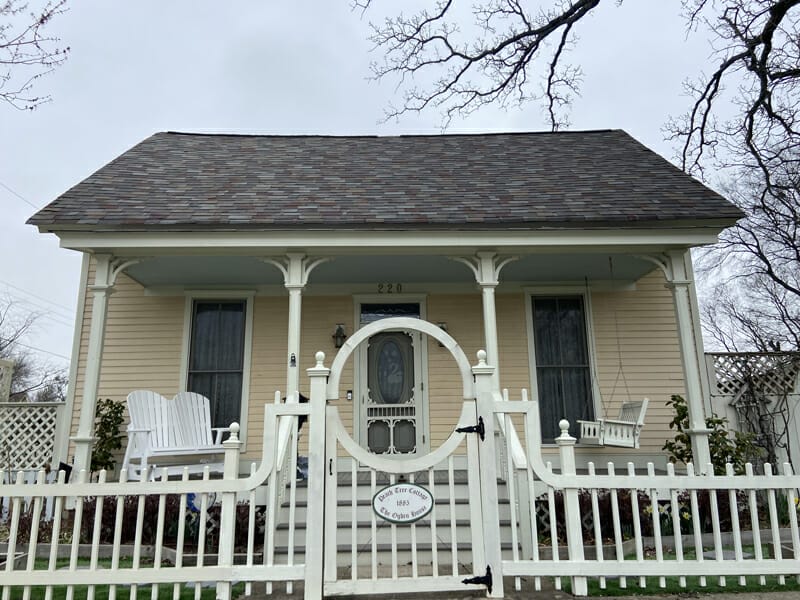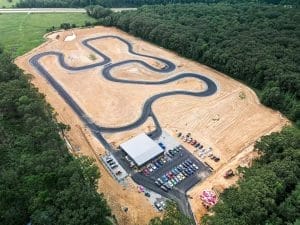

Uh oh...
It appears that you're using a severely outdated version of Safari on Windows. Many features won't work correctly, and functionality can't be guaranteed. Please try viewing this website in Edge, Mozilla, Chrome, or another modern browser. Sorry for any inconvenience this may have caused!
Read More about this safari issue.

My earliest memories of the Quapaw Quarter involve sitting in the car with my dad, waiting for my mom to get done with her painting classes at the Arkansas Museum of Fine Arts. During the daytime there were ducks to feed and chase, but evening classes necessitated that we sit in the car. After sunset, Dad and I would eat snacks, play word games and drive around the Quapaw Quarter. These houses were older and grander than the ones in our Park Hill neighborhood. The old homes, especially at night, inspired my mind with fantastical stories of old ladies with strange names. I imagined interesting lives behind those yellow windows. The lawns were sometimes overgrown, the trees huge, and it seemed just the place for fairy tale stories and witch gardens.

Now that I’m grown, I’m not much different. I still like to imagine fantastical tales that take place inside old homes. Whether you have a rollicking imagination, or you just really appreciate history and architecture, there is no other neighborhood in Little Rock more inspirational or historic than the Quapaw Quarter.
The term “Quapaw Quarter” was coined in the 60s. The name was chosen in honor of the Quapaw Native Americans who originally lived in this area. The Quapaw Quarter comprises three general areas: The Governor’s Mansion District, MacArthur Park District, and South Main Residential District. There are notable landmarks within all of these districts, including historic churches, the governor’s home, the Little Rock Arsenal and Mount Holly Cemetery . The South on Main area of the Quapaw Quarter has become a thriving community, complete with restaurants, businesses, and my favorite shop .

The names attached to the homes in the Quapaw Quarter are a veritable “Who’s Who” list of history makers. A few weeks ago, on a rainy spring day, I decided to drive around these neighborhoods, take pictures and just admire the general beauty of the area. As I captured photos of homes that inspired my imagination, I decided to do a little investigating about the original residents.

Villa Marre
One of the most famous houses is, without question, Villa Marre. Pop culture labels this home as the “Designing Women” house. However, Julia Sugarbaker is a fictional character, and the home is located in the Quapaw Quarter, not Atlanta. Built in 1881 by Angelo and Jennie Marre (thanks to a fortune made in the saloon business), it was constructed in the Second Empire architectural style, but with Italianate details harkening back to Angelo’s Italian roots. The interior is equally regal, decorated with beautiful woodwork and murals that have survived the passage of time.

Turner-Ledbetter House
The Turner-Ledbetter House is another stunning home in the Quapaw Quarter. Built in 1891, this Queen Anne Victorian was constructed with over 4,000 square feet. It was built for Susan Turner, a local (and single) businesswoman. Susan, a woman clearly ahead of her time, built several other large homes in the area and used them as investment properties. The house was eventually sold to the Ledbetters (which explains the hyphenated house name), and then was converted into apartments. It was eventually abandoned and condemned by the city. Thankfully, the house was purchased, saved, and meticulously renovated into the jewel we see today.

Rogers House
The Rogers House was constructed in 1915 for physician Frank O. Rogers and his wife, Emma.
They lived there for almost 30 years until his death, and the house went on to lead many different lives, eventually becoming the Elizabeth Mitchell Children’s’ Center. It served children with emotional struggles, and as many as 30 children lived there at the same time. Today it is a renovated private residence. This home is a stunning combination of Classical Revival and Craftsman styles, and boasts several original light fixtures and stained-glass windows.

Hornibrook House
This beautiful Queen Anne mansion was built by James Hornibrook and his wife, Margaret, in 1867. Originally from Canada, this couple moved south and made their fortune in the liquor business. They paid somewhere around $20,000 for 7200 square feet of luxury. Among its notable architectural features, it boasts a tower fit for fairytales and a stunning interior stained-glass skylight. The Hornibrooks had a fairly tragic (and quick) life in their new home, living in it for only two years. James died at the young age of 49 and Margaret followed him only three years later. This home has led many lives over the years as a women’s college, women’s boarding house and eventually a nursing home. Thankfully, the home has undergone extensive renovations (including a return to its original floor plan). It is now a bed-and-breakfast known as the Empress of Little Rock.

Hemingway House
When I discovered that a “Hemingway House ” existed in the Quapaw Quarter, I became prematurely excited. The idea that one of literature’s great writers might have called our city home gave me stomach flutters. But alas, it was a different Hemingway. Wilson Hemingway was a powerfully influential figure in Arkansas law. He served as an Arkansas Supreme Court justice and co-founded what is now known as Rose Law Firm. His home is one of the gems of the Quapaw Quarter, a Queen Anne house built in 1894. Like many houses in the neighborhood, this once proud structure eventually became a boarding house and deteriorated over the years. It was eventually renovated as a private residence.

Cornish House
The Cornish House always gives me Bruce-Wayne-vibes and is perhaps my favorite home in the Quapaw Quarter. Built in the Tudor Revival and Craftsman styles with five bedrooms, a porte cochere, and a third-floor ballroom, this home was constructed with the express purpose of creating a luxe lifestyle for its occupants. Edward Cornish was a successful banker, and his wife Hilda was important in her own right. She was a prominent leader in the female contraception movement. After the couple passed away, this beautiful house served as a nursing home for over 30 years before becoming vacant. It was eventually purchased by Hampton Roy, a local ophthalmologist and writer, who restored it to its original splendor.

The personal stories, struggles and drama attached to the houses in the Quapaw Quarter could easily fill a book. This overview is but a smattering of the historical homes in Little Rock’s oldest neighborhood. The Quapaw Quarter Association is also holding a Tour of Homes on Mother’s Day weekend, and it’s a terrific opportunity for house and history lovers alike. If you haven’t spent an afternoon dining in the SOMA neighborhood, or just generally admiring the living and breathing history of the Quapaw area, you should put it on your to-do list. The Quapaw Quarter is a phoenix that has risen from its decline and has once again become the grand neighborhood it was intended to be. If you need me, I’ll be driving around, sipping tea, still imagining what fantastical stories live inside the gardens and walls of these houses.
We do the work.
You check your email.
Sign up for our weekly e-news.
Get stories sent straight to your inbox!








Like this story? Read more from Liz Harrell
My son has a favorite phrase he uses when faced with repetition. It...
I remember visiting my grandmother on her lunch break. She worked at a...
Every time my dad comes to visit me, he reminds me of how small Conway...
Join the Conversation
Leave a Comment